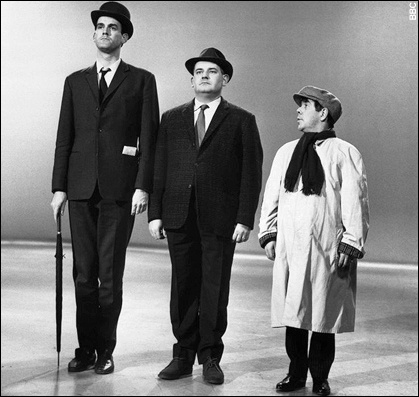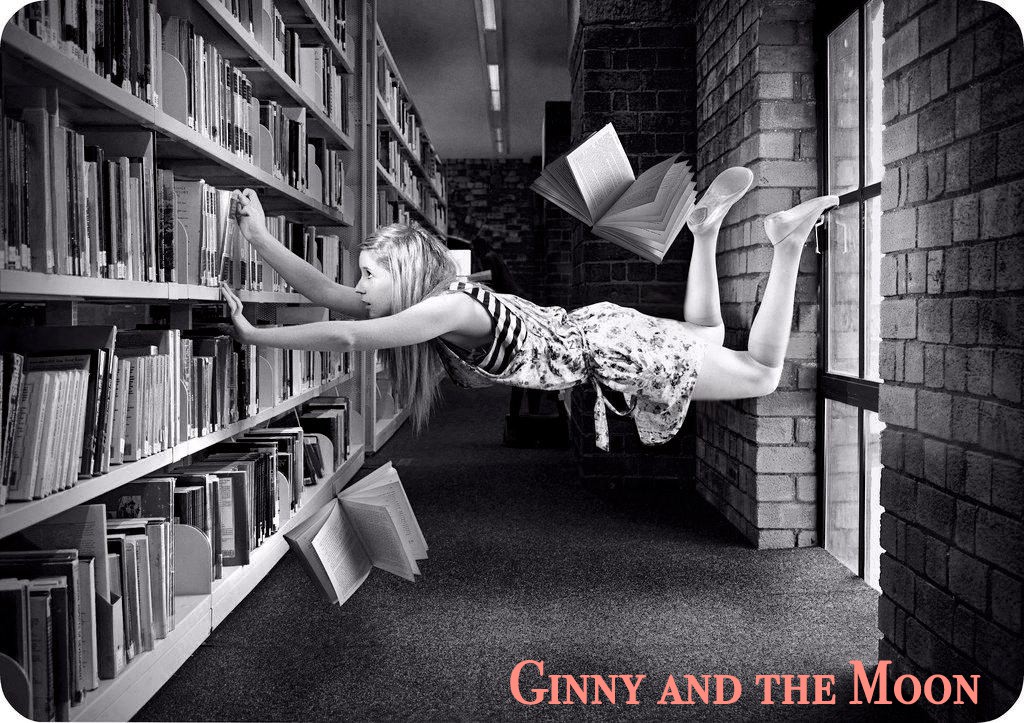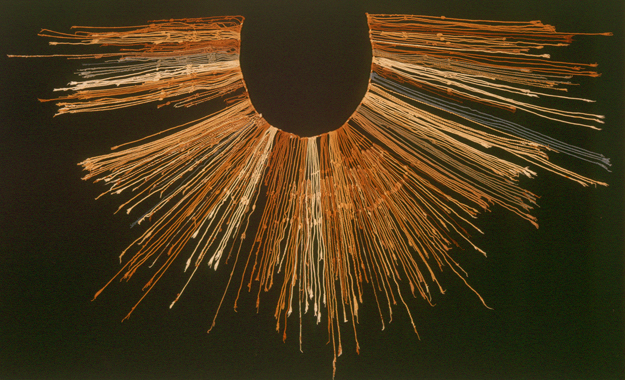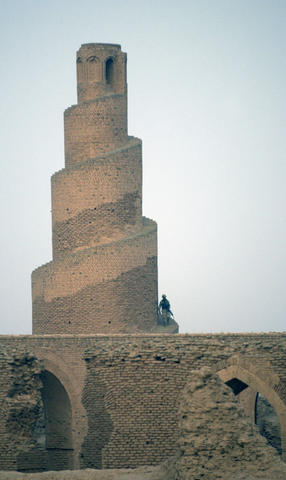‘History from below’ or ‘people’s history’ is a social history of the ‘common’ people. However it is a portion of history that is frequently overlooked and understudied when it comes to understanding the identity and lifestyle of this section of society. Howard Zinn identifies this history as telling the story of the relationship “between conquerors and conquered, masters and slaves, capitalists and workers, dominators and dominated in race and sex”[1].

“I look up to him because he is upper class, but I look down on him because he is lower class”…”I know my place”. A sketch from ‘The Frost Report’ featuring John Cleese, Ronnie Barker and Ronnie Corbett.
The majority of social history focuses around ‘WEIRD’ (Western, Educated, Industrialied, Rich, and Democratic) history. A good example of this is the copious amounts of history written about the monarchy, but the much less written about the societies over which they ruled. Mostly this stems from what the term ‘WEIRD’ entails; that the people being written about and who were doing the writing were from the same group, were educated and, most importantly, rich. The upper classes only occupied a small portion of society and so were not the norm, they were the exception. So the most significantly beneficial contribution of ‘people’s history’ is that it offers an alternative perspective, often in direct opposition to this theory of ‘WEIRD’ history. One of the biggest sections of history to benefit from ‘history from below’ is the understanding of groups who have suffered oppression; the poor and the lower classes, ethnic and religious minorities, women, the disenfranchised and other overlooked fringes of society. History has benefitted from the expanded understanding of of these groups that ‘history from below’ has brought.
Women’s history is one of the groups which has contributed to our understanding of the gender divide and gender stereotypes. Throughout history, contemporaneous sources have virtually overlooked women, in the sense that the importance of their everyday work and their political influence has been disregarded. Social mobility has generally been discussed in terms of men alone[2]. Burke raises many questions concerning the role of women, especially concerning their status, their role in the world place and in society in general. What kinds of work were performed by women in particular places and times and has the status of women changed? However as he highlights, the difficulty in finding evidence or documentation concerning women stems from the fact that little of it was actually recorded by the male dominated society[3]. “Generally, however, the further back historians seeking to reconstruct the experience of the lower orders go, the more restricted the range of sources at their disposal becomes”[4]. As with most social history it is only recently that historians have taken an interest in the plight of women, mostly driven by the Feminist movement which sought greater acknowledgment of women and their past.
Religious and ethnic minorities have also suffered in the reporting of their respective histories. One suggested reason for this is embarrassment. Zinn highlights this by using the example of the Holocaust, stating that the “Holocaust play[s] a more prominent role in [America now] than it did in the first decades after the Second World War”[5] and what he means by this is that whilst immediate post-World War Two society and scholars recognised the atrocities as horrific and unique, there was a level of embarrassment felt about the fact that something like the Holocaust was able to have occurred so recently and so they seemingly ‘skirted around’ the issue. Historians nowadays no longer have to come to terms with this embarrassment and have a level of detachment, possibly because of the passage of time, allowing them to write with more detail and less shame about the history surrounding the Holocaust and other cases of religious intolerance. This argument can also be applied to racial history, the key example in this case being the transatlantic slave trade, and the embarrassment about what had been regarded as ‘normal’ in the recent past.
The defining feature of these examples is the social standing or class of the protagonists; their label of ‘poor’ or ‘lower class’. This umbrella group ‘poor’ historically had little to no impact on society. Their lives, rather than forming the subjects of formal historical analysis, were recorded mainly through the documentation of the controlling classes, through judicial records and the media.
As highlighted by Zinn, one of the most unequivocal social dichotomies comes in the form of the ‘conquerors and the conquered’. This may best be summed up by the phrase “history is written by the victors”, popularly attributed to Winston Churchill. “[We] found a most numerous population, and a great number of houses”[6] is how Christopher Colombus described his first encounters with South American natives, a discovery which would open the door to an entirely new civilisation. The study of these tribes challenged the stereotypical perceptions of the ‘savage’ native Americans as a mass of evidence uncovered their societies, the way their tribes were structured, their gender roles and sexuality, and even their psychology. It was discovered that these tribes actually lived an egalitarian and in some areas, advanced, way of life, including “nonstate politics, nonmarket economies, and noninstitutionalized religions”[7]. Their society was shown to be an equal community, where women and men had different roles but were respected equally within their civilisation, as Lahontan describes it, “their Daughters have the command of their own Bodies and may dispose of their Persons as they think fit; they being at their liberty to do what they please”[8]. However, as with history from this age, the contemporaneous history was written by the conquerors, written to justify why they were there and what they were doing. It was only after that phase that historians turned to and contradicted the often biased views of these primary sources and developed a much better understanding of the lives of these tribes. A short lived history as Columbus simultaneously discovered and wiped out an entire civilisation, with the tribal population being reduced by up to 90% in some areas following smallpox and tuberculosis epidemics[9].
Columbus brought us knowledge of previously unknown and unstudied socieites, however all too late. What historians learnt about the tribes of South American history was important on several levels. When the colonists arrived, they were faced with something starkly different too their own European society in which there was a distinct dichotomy between male and female roles. That these ‘savage’ tribes were able to maintain a nondiscriminatory civilisation was in contradiction of the colonists belief. This not only showed social differences based around class or gender, but geographic and innate social differences.
Slavery, as Zinn points out, offers a similar contrast between traditional history and ‘people’s history’. Slave society is now considered in depth, that is in relations and behavior[10]. Studying slavery is a new field within in history and as Hobsbawm highlights there is already a wealth of information being discovered about their troubled past. But the benefits to historians studying slavery is that “slaveowners cannot be understood without slaves, and without the nonslave sectors of society’[11]. The study of the slave trade is also important because of its impact on later history such as civil rights movements and African-American emancipation.
One of Zinn’s other suggested comparisons is that of the ‘capitalist and the worker’. Money has often created a divide between those who have it and those who do not and this in turn creates a social divide. This is a section of ‘people’s history’ which has become more relevant during the 20th Century following massive industrial upheaval in Britain, the Russian Revolution and an emerging politicised working class. Through the stories of working people historians develop a better understanding of the reasons and psychology behind the workers movement. Brian Simmons, a teacher from Hackney gave his account of working class life which illuminates the fact that there are not just differences in social ranking, but also in political and religious ideology. Simmons states that “[he] never mixed with the well-off jewish people. You were Labour, they were Tories”[12] and that he believed social differences are something to overcome, “if I’ve learnt anything it’s that we have to fight”[13]. The contribution of worker’s history is particularly relevant in the 20th and 21st Century history, as these centuries saw an aware and increasingly politicised working class and so they became responsible for much more societal change as a group.
Through these examples ‘history from below’ becomes extremely relevant in terms of establishing an all inclusive overall view of society. However ‘history from below’ also has its drawbacks. Over-compensation for the lack of common social history is an initial problem. There is the suggestion that in compensating for the omissions of traditional history, such as between the elite and people and male and female, it could reverse the roles whereby there becomes a wealth of writings on female and common history. Burke suggests that it would be more useful to focus on the changing of relationships[14]. Further, works devoted to ‘people’s history’ often fall into the same trap as traditional history by omitting the other sides of society. This is particularly highlighted by working class history. Hitchcock’s views is that “in the 1980s the social history of the poor, and of the political struggles of the working class, gradually evolved from what had been perhaps the most humane and internationally important facet of British history into an increasingly disregarded fragment of historical studies”[15] and highlights the fact that because of social change now, being a more liberal and united society, there is less importance placed on knowing the history of the working classes.
Patrick Joyce has argued that because of the changing nature of history, the need for social history will be eliminated. He argues that, in the past, history’s aim was to transform the object of its attention, be it women, classes, the oppressed. However there is now uncertainty as to what the historical aims are[16]. He poses the questions; what is the aim of social history now; is ‘history from below’ of relevance in the modern world; and will it be relevant in the future? Hobsbawm too argues that there is a move away from classical Rankean history which exposed the structure and changes in society, and more especially between the relationships between classes and social groups[17]. History is evidently a polarised subject, “History is the story of class conflict”[18] and it is only in more recent times when that polarisation between the classes has begun to decrease that historians take a greater interest in ‘history from below’.
In furthering the study of history ‘history from below’ is a useful source but not without it’s problems. In essence it attempts to do the same as ‘WEIRD’ or traditional history, by focusing around one section of society and omitting any of the alternatives, and so suffers an equivalent exclusivity. It is argued that while it still bears relevance when concerned with some eras of history, particularly in its relevance to earlier history, its place in studying modern or recent history is limited. ‘History from below’ is fundamentally beneficial because it provides the alternative to the standard ‘WEIRD’ history which is dominant throughout the subject. It has contributed massively to the history of non-conformist groups throughout history, women and workers being particularly significant examples. ‘History from below’ fills in what traditional patriarchal history excluded. Advocates of ‘history from below’ also highlight the benefits it has in filling in significant social gaps from the lower classes who have so frequently been overlooked in the past. The important question concerning ‘history from below’ is what contribution did it back to history that traditional history had not done before? This is where ‘people’s history’ is most relevant, by creating a broader view of social history and creating a better understanding of the people who drive social change from the view of the participants.
Ginny Dawe-Woodings BA MA
- Howard Zinn, A People’s History of the United States from 1492 to the Present (1996), p. 10
- Peter Burke, History and Social Theory (1992), p. 51
- Ibid, p. 51
- Ibid, p. 27
- Howard Zinn, On History (2001), p.66
- Thomas G. Paterson, Karen Ordahl Kupperman, Major Problems in American Colonial History (1999), p. 4
- Salisbury. N, ‘The Indians’ Old World’ in Major Problems in American Indian History (1993), p. 30
- ‘Baron Lahontan Describes Love and Marriage Among the Hurons’ (1703), in Major Problems in the History of American Sexuality (2001), p.30
- John Elliott, Empires of the Atlantic World (2006), p. 65
- Eric Hobsbawm, ‘From Social History to the History of Society’ in Historical Studies Today (1971), Vol. 100, No. 1, p. 35
- Eric Hobsbawm, ‘From Social History to the History of Society’ in Historical Studies Today (1971), Vol. 100, No. 1, p. 37
- ‘Brian Simons: Teacher’ in Working Lives: Volume 2: Hackney 1945 – 1947 (1977), p 169
- Ibid, p 192
- Peter Burke, History and Social Theory (1992), p. 52
- Tim Hitchcock, ‘A New History from Below’ in History Workshop Journal (2001), Vol. 57, No. 1, p. 294
- Patrick Joyce, ‘The End of Social History?’ in Social History (1995), Vol. 20, No. 1, p. 76
- Eric Hobsbawm, ‘From Social History to the History of Society’ in Historical Studies Today (1971), Vol. 100, No. 1, p. 22
- Peter Burke, History and Social Theory (1992), p. 59
















